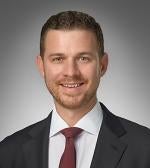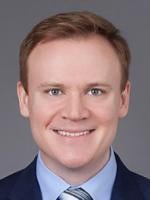In University of South Florida Board of Trustees v. United States,[1] the Federal Circuit rejected a strict temporal limitation on when the Government’s license rights in patents stemming from federally funded research is triggered under the Bayh-Dole Act. Specifically, where a recipient of federal funds subcontracts out work to be performed using those federal funds and the subcontractor reduces an invention to practice, the Government’s license rights can be triggered by that reduction to practice even if no formal subcontractor agreement was in place between the fund recipient and subcontractor at the time of reduction to practice.
Bayh-Dole Background
The Bayh-Dole Act (“Bayh-Dole”), 35 U.S.C. §200, passed in 1980, streamlined and relaxed federal government policy regarding patent rights to inventions developed with federal grant money. Prior to Bayh-Dole, some federal agencies had patent policies which required grant recipients to give ownership of resulting patents to the government. Bayh-Dole replaced this with a framework that permits funding recipients to retain title to their inventions, with the proviso that the funding agency is given a nonexclusive, nontransferrable, irrevocable, paid-up license to practice the invention. The funding agency obtains a license to “subject inventions,” which is defined as “any invention . . . conceived or first actually reduced to practice in the performance of work under a funding agreement.” 35 U.S.C. § 201(e) (emphasis added).
Relevant Facts of This Case
In September 1995, researchers at the University of South Florida (“USF”) submitted a grant application to the National Institute of Health (“NIH”) regarding work on sources of Alzheimer’s Disease (“Alzheimer’s”). The grant was intended to cover, at least in part, research into mice having a particular property of developing Alzheimer’s at an accelerated rate. The invention of the patent at issue in the case (U.S. Patent No. 5,898,094) relates to mice with this property.
This case centers on the relationship between the date of funding, the date of the invention’s reduction to practice, and by whom the invention was reduced to practice. The relevant facts are detailed below.
In August 1996, the first litter of mice potentially having the accelerated Alzheimer’s property were born at USF. Time was still needed to determine if the mice would develop Alzheimer’s at an accelerated rate.
In October 1996, the provisional application to which the ’094 patent claims priority was filed and the two inventors of the ’094 patent assigned their rights in the invention to USF.
By December 1996, the two inventors of the ’094 patent changed their employer from USF to Mayo Clinic. Two other professors in charge of testing the mice tissue to determine when Alzheimer’s developed remained at USF.
As the 1996 fiscal year ended, NIH awarded the grant to Mayo Clinic (the grantee of the grant had been switched from USF to Mayo Clinic around when the inventors changed employment from USF to Mayo Clinic). Because USF was still expected to do some grant-covered work (testing the mice tissue to determine when Alzheimer’s developed), Bayh-Dole required that Mayo Clinic and USF enter a subcontract so that grant money could be paid to USF.
In April 1997, the invention was reduced to practice at USF when the two remaining USF professors identified Alzheimer’s development in the mice sooner-than-expected (i.e., at an accelerated rate).
In November 1997, Mayo and USF executed the subcontract relating to provisions of the NIH grant money with an effective date of September 1, 1997.
Analysis
USF argued that, because the November 1997 subcontract under which it received government funding was not in place when the subject-invention was reduced to practice in April 1997, the Bayh-Dole Act’s provision granting the Government a license to the subject-invention (§ 202(c)(4)) was not triggered. As the Federal Circuit put it:
USF argues that the November 1997 agreement is legally insufficient, even if it provided funds to pay for the pre-agreement, April 1997 work, because it was entered into in November 1997 and had an effective date in September 1997, after the April 1997 work.
Wading into contract law, the policy underlying the Bayh-Dole act, and the practical realities of Government-funded research, the Federal Circuit rejected USF’s argument. The result: The 1997 subcontract triggered the Government’s license rights under Section 202(c)(4), putting an end to USF’s infringement case against the Government.
First, citing the Restatement (Second) of Contracts, the Federal Circuit reiterated that “a contract may provide for payment for work previously done at least where, as here, the contract also pays for work yet to be done.” Even though the November 1997 subcontract identified an effective period beginning after the reduction to practice, the Federal Circuit saw this as only identifying when obligations for work yet to be done were binding. USF took the position that it had fronted the funds for the April 1997 reduction to practice, and that Mayo reimbursed these funds after execution of the November 1997 subcontract. According to the Federal Circuit, USF’s position showed that the November 1997 subcontract provided for payment for pre-effective, April 1997 reduction to practice work in addition to the work yet to be done proceeding the September 1, 1997 effective date.
Second, the Federal Circuit highlighted two policies underlying Bayh Dole: (1) respecting inventor choices regarding the terms of government contracts, and (2) ensuring that the government obtains sufficient rights for inventions that it funds. The November 1997 subcontract expressly provided for application of Bayh-Dole, and USF accepted NIH funding from Mayo under the subcontract. According to the Federal Circuit, applying Bayh-Dole to the invention of the ’094 Patent, which was funded by NIH funds under a subcontract explicitly mentioning Bayh-Dole is consistent with these policies.
Third, the Federal Circuit reasoned that it was common for there to be a delay in formal subcontracting after an award of government grant funds. Yet, there is significance that advancements in medicine proceed uninterrupted. For instance, here, the work of caring for the growing mice could not have been put off until a formal Mayo-USF subcontract was executed. According to the Federal Circuit, applying Bayh-Dole to the invention of the ’094 Patent respects the practical realities of grant administration and scientific research.
Holding
The November 1997 subcontract controlling the transfer of federal grant funds from the recipient (Mayo Clinic) to USF (the subcontractor) triggered the Government’s license rights in the ’094 patent that stemmed from research funded by the grant even though the ’094 patent was reduced to practice in April 1997, months before the subcontract was executed. Because the Government had a license to the ’094 patent, the Government could not infringe the ’094 patent.
[1] University of South Florida Board of Trustees v. United States, No. 2022-2248 (Fed. Cir. February 9, 2024)




 />i
/>i
